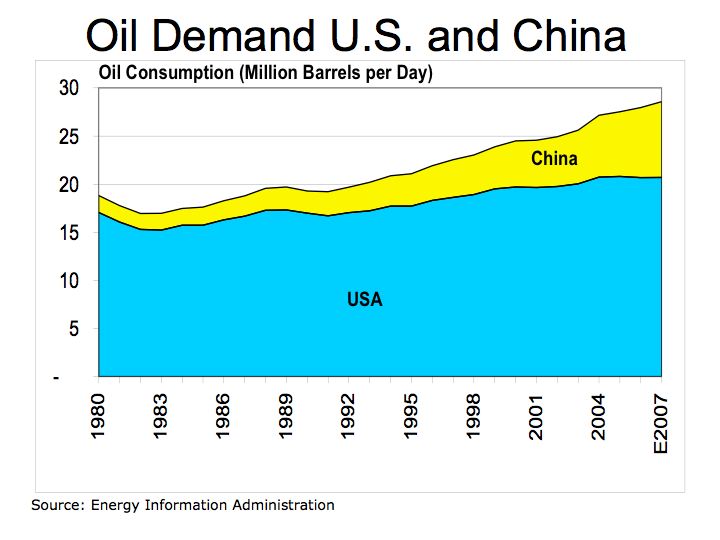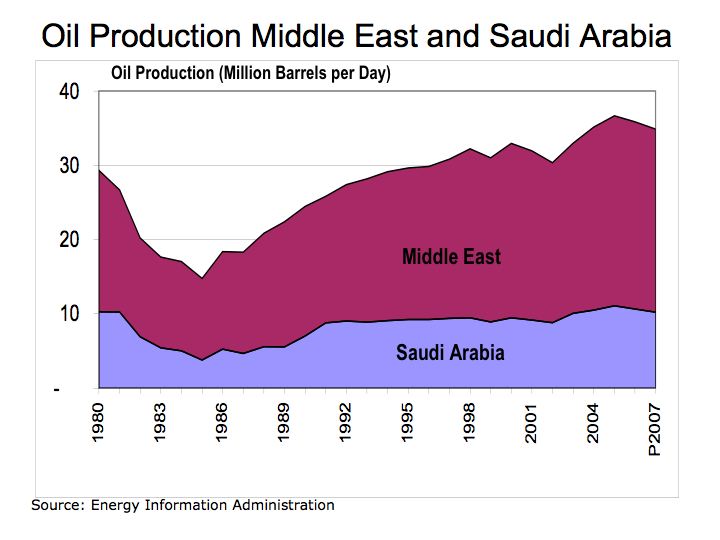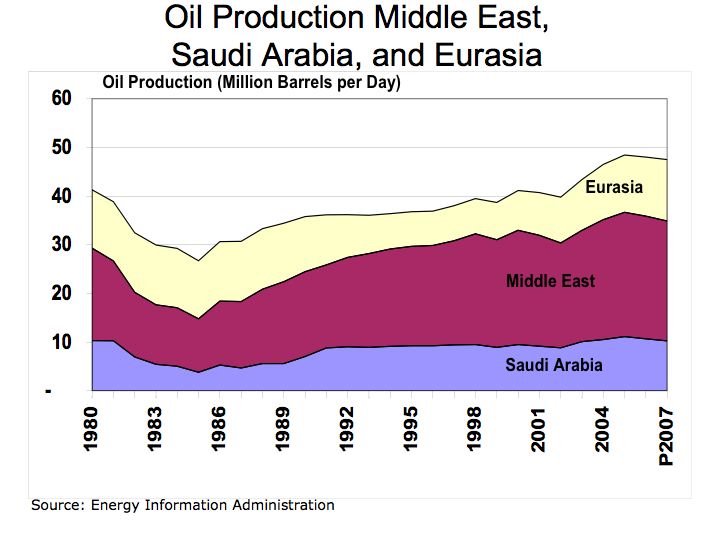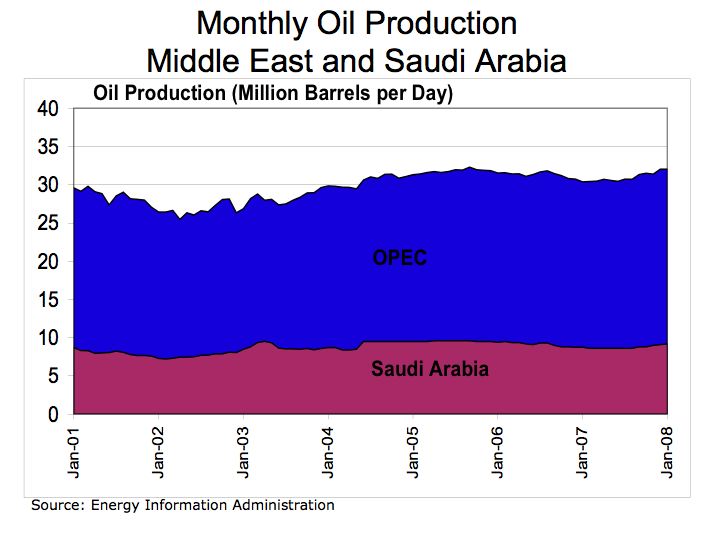Peak Oil – Time for Investments into Alternative Energy
The question of Peak Oil, first proposed by Dr. M. King Hubbert can best be illustrated by analyzing the supply and demand for oil. With use of statistics complied by Energy Information Administration (EIA) , the tenuous position our energy needs becomes more apparent. Let’s examine the latest data from the EIA to provide a picture of the global demand and supply of oil.
Oil Demand
Figure 1 Oil Demand U.S. and China

From Figure 1 we can see that while the demand for oil in the U.S. has grown at a rather moderate rate in comparison to China. The demand for oil in the U.S. declined at an average annual rate of 0.4% during the 1980’s. U.S. oil demand has averaged at a 1.5% compounded annual growth rate (CAGR) during the 1990’s and 1.0% in the last five years since 2001.
In China, demand for oil is grew at 2.7% CAGR during the 1980’s and increased to 7.6% in the 1990’s. Since 2001, the demand for oil in China is growing at an 8.1% CAGR over the last five years. The strong demand for oil from China is remains unabated and is driven by growing motor vehicle usage. In nine years, at its current growth rate, China’s oil consumption will exceed the level of oil consumption the U.S. had in 1991 and in twelve years exceed our current level.
Figure 2 Oil Demand in China

Figure 2 illustrates that the demand for oil in China is quite substantial. With the rate of growth in oil consumption in China exceeding 8% it won’t take very long to exacerbate our tenuous current energy position. Perhaps a review of oil production will shed some light on the topic.
Oil Supply
The following graphs provide a review of oil supply from the Middle East, Saudi Arabia, OPEC, Russia and surrounding Eurasia countries including the former Soviet Union.
Figure 3 Oil Production Middle East and Saudi Arabia

While oil production contracted somewhat during the 1980’s, oil production in the Middle East and Saudi Arabia has grown since 1980, but recent oil production appears constrained. Oil production in the Middle East is up 3.1% on a CAGR during the 1990’s, and has remained at that level since 2001. Saudi oil production grew 3.0% during the 1990’s, but has dropped slightly to 2.1% since 2001.
Meanwhile, among the countries of the former Soviet Union, we see oil production gaining strength. In the countries comprising the former Soviet Union (Eurasia), oil production is up 6.7% on a CAGR since 2001.
Figure 4 Oil Production Eurasia, Middle East and Saudi Arabia

Currently OPEC accounts for approximately 37% and Saudi Arabia 11% of the world’s oil production. Saudi Arabia is recognized as having the largest oil reserves in the world and its Ghawar oil field is the single most productive oil field in the world, according to a recent article in the Wall Street Journal . “Saudis Face Hurdle in New Oil Drilling” The Saudis are developing new fields such its Khurais field, but are finding production efforts challenging as they employ deep horizontal drilling and water injection to achieve production. Given what we glean from the EIA production statistics, achieving moderate oil production growth maybe more of a challenge then we think.
Figure 5 Monthly Oil Production

The bottom line is that our dependence on oil leaves us vulnerable not only to supply disruptions but also in trying to protect supply in countries that gravitate towards violence and terrorism. If more global efforts were employed to develop alternative energies, we could limit our dependence on oil, improve global economics by offering affordable energy to the world, and save our environment and climate – a small step for our planet.